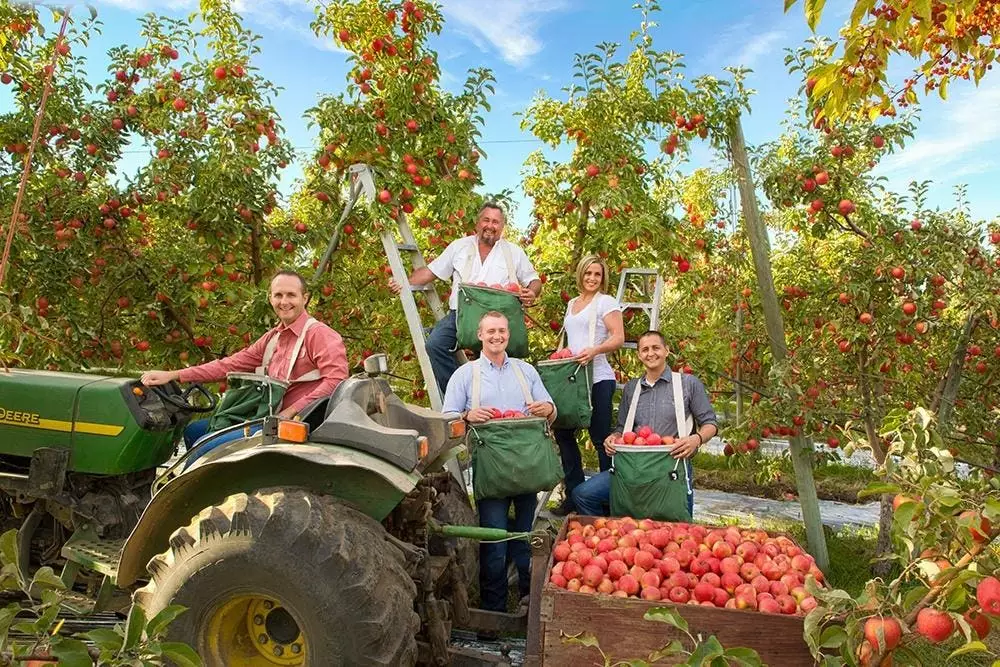Stemilt Growers, founded by Tom Mathison in Wenatchee, Washington, marks a significant chapter in American agricultural history. Its inception over six decades ago signified the beginning of a family legacy intertwined with innovations reshaping the fruit industry, especially apple cultivation. Despite the arduous journey filled with challenges and setbacks, Stemilt has reinvented itself and thrived amidst evolving market demands and technological advancements. The roots of this company stretch back to 1893, when the Mathison family began homesteading in Washington. A 10-acre apple, pear, and cherry orchard planted in 1914 laid the groundwork for what would become a pivotal business in the fruit market.
Hurdling over obstacles is not merely a footnote; it’s a testament to resilience. Tom’s acquisition of control at just 21, following a tragic family loss, paints a portrait of youthful determination against the backdrop of post-WWII America. This highlights an era when agriculture faced numerous systemic challenges, particularly concerning cooperative marketing systems that struggled to deliver quality fruit to consumers.
Tom Mathison’s foresight in exploring independent post-harvest handling and packing in the late 1950s catalyzed transformational changes, not just for Stemilt, but for the broader fruit industry. This pivotal move was driven by the disappointing returns on crops and an unwavering resolve to improve product quality. In 1964, establishing Stemilt Growers allowed the company to gain autonomy over vital aspects of the supply chain—storage, shipping, and marketing. This strategic pivot laid the foundation for a recognizable brand associated with quality fruit.
The landscape of apple cultivation underwent a seismic shift with the introduction of Controlled Atmosphere Storage technology in the 1960s. This innovation allowed apples to transition from a seasonal fruit to a year-round staple, propelling them into direct competition with tropical produce, notably bananas. As consumer preferences evolved, the apple industry centered on select varieties, turning the Red Delicious into a predominant choice. Yet, challenges loomed on the horizon, exemplified by the infamous “Alar Scare” of 1989, which created panic around health risks linked to certain agricultural chemicals. This crisis led to devastating financial repercussions in the industry, but it also sparked a progressive shift towards diversity—in both farming practices and consumer offerings.
The fallout from the Alar Scare catalyzed a strategic reevaluation within the apple industry, prompting growers to diversify their offerings. Retailers, recognizing varied consumer preferences, began experimenting with shelf space allocation for a broader range of apple varieties. Here, Stemilt carved a niche by developing proprietary apple varieties, thereby differentiating their products in a competitive marketplace. Their exclusive rights to the Rave® variety, alongside branded cherries like Half Mile Closer to the Moon®, exemplify the company’s branding ingenuity and its commitment to quality.
Moreover, moving beyond traditional varieties allows Stemilt and other growers to respond to shifting consumer tastes, positioning them advantageously amidst market fluctuations. The inherent challenge remains: how to maintain visibility and strengthen consumer loyalty when the brand name is overshadowed by the compelling allure of the fruit itself.
Recent advancements in agricultural practices have further enhanced Stemilt’s productivity and sustainability. The shift towards high-density and short-stature orchards utilizing dwarfing rootstocks has revolutionized the apple cultivation landscape. This modern approach results in trees that grow to a manageable height of 5-8 feet while occupying less space, enabling farmers to harvest without the need for ladders—an innovation that enhances safety and efficiency.
Time to fruit-bearing has also been considerably reduced, allowing growers to reap harvests as early as the third year post-planting. Such advancements directly address labor concerns and accelerate returns on investment, crucial in an industry characterized by intensive manual labor.
While technological innovations alleviate some of the labor-intensive aspects of fruit cultivation, the challenges surrounding agricultural labor remain pressing. Political controversies regarding immigration have led to complexities within the labor market, making the H2A visa system unpredictable.
In response, Stemilt’s partnership with CiertoGlobal.Org signifies a forward-thinking approach to labor relations. By ensuring comprehensive training, housing, and competitive wages for their workers, Stemilt fosters a culture of respect and mutual benefit. The astounding 95% return rate of workers attests to the company’s commitment to creating a supportive work environment—a vital aspect of their operational success.
Stemilt’s journey from a modest family farm to a key player in the fruit industry is a robust narrative rooted in innovation, resilience, and adaptation to market dynamics. The multifaceted approach that blends quality, diversification, and labor sustainability not only highlights the company’s historical significance but also its role as a model for agricultural enterprises globally. As the fruit industry continues to adapt to changing consumer demands and technological advancements, Stemilt stands poised to navigate the future while honoring its rich legacy.


Leave a Reply